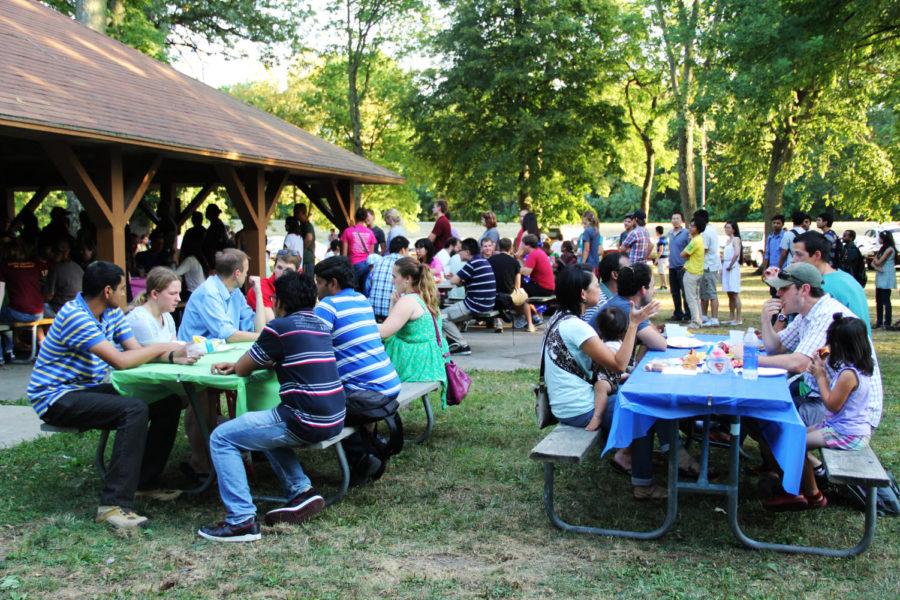Graduate enrollment increases with undergraduate enrollment
Kelby Wingert/Iowa State Daily
Approximately 500 graduate and professional students attended the annual Graduate and Professional Student Senate Fall Social on Friday, Sept. 6, at Brookeside Park in Ames. The social was a “good opportunity for graduate [and professional] students to meet people outside their own fields,” said Bill Graves, associate dean of the Graduate College and co-adviser to GPSS.
September 25, 2013
The undergraduate program is not the only increase Iowa State is debating.
As administrators at Iowa State discuss why undergraduates choose to come to Iowa State, the focus is also on graduate students.
The number of graduate students enrolled at Iowa State this semester is 4,710. Jonathan Wickert, senior vice president & provost of the Graduate and Professional Student Senate, said President Steven Leath wants to brand Iowa State as a research institution, increasing graduate enrollment.
Wickert said the high demand for Iowa State’s graduate programs comes from two different directions.
“On one side, more working professionals — many of whom received their undergraduate degrees from Iowa State — are coming back for graduate degrees,” Wickert said. “We also have student who are more likely to pursue graduate study all the way to Ph.D.”
Iowa State offers master’s degrees online, allowing professionals to balance both school and work. In addition to the 19 online master’s degree programs, Iowa State offers 112 master’s degree programs and 83 at the doctorate level. Iowa State offers one professional degree program, veterinary medicine.
Wickert said enhancing the impact and quality of graduate study is a way to grow the graduate program. Iowa State is working with companies in Iowa for their current employees. The administration is also recruiting students who want to address society’s challenges from an academic prospective.
“That is the focus of President Leath’s new Presidential Scholars Initiative,” Wickert said. “It will provide additional financial aid to graduate students in the form of first year stipends for the selected Ph.D. students.”
T.J. Rakitan, doctorate student in economics, chose to come to graduate school at Iowa State when the ISU economic department addressed him.
“When the ISU Econ Department says, ‘Come on down,’ you take them up on it,” Rakitan said.
The current graduate program structure of smaller classes could be potentially altered with an increase in graduate enrollment. Since graduate students mainly work with faculty in a research context, the one-on-one work time could be altered.
An increase in graduate enrollment would lessen the demand of their teaching assistant duties. As the undergraduate numbers increase, the number of students needing assistance in the prerequisites classes, such as Economics 101, increases as well as the number of tests that will need to be graded.
“The impact on each graduate TA is not particularly burdensome, especially if graduate enrollment rises along with undergraduate enrollment,” Rakitan said.
Wickert said another way Iowa State plans to grow the graduate program is by creating new opportunities for graduate students through flexible hours and more degree options.
“I get the impression that it takes a certain kind of person to opt to spend an additional four to six years in school, often having to give up the chance to earn a more comfortable salary by working instead,” Rakitan said.
Iowa State continues to add new degrees to the graduate program.
“Over the past year, we have started-up five new degrees: A new Ph.D. program in wind energy, a master’s degree in finance, and two master’s degrees in the College of Design in sustainable environments and urban design,” Wickert said.

















